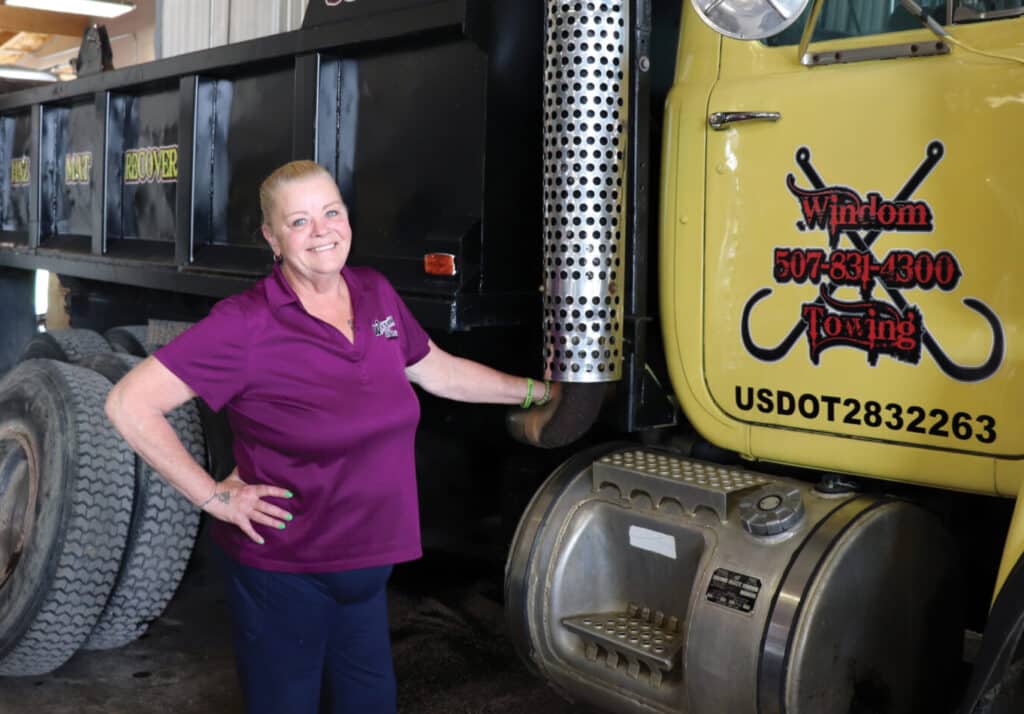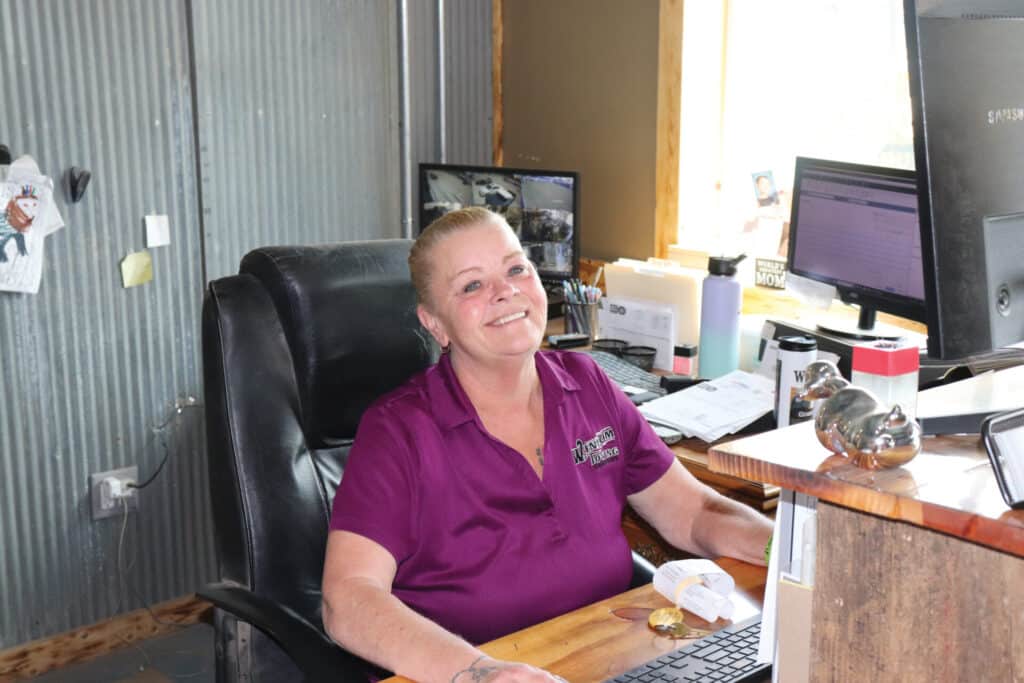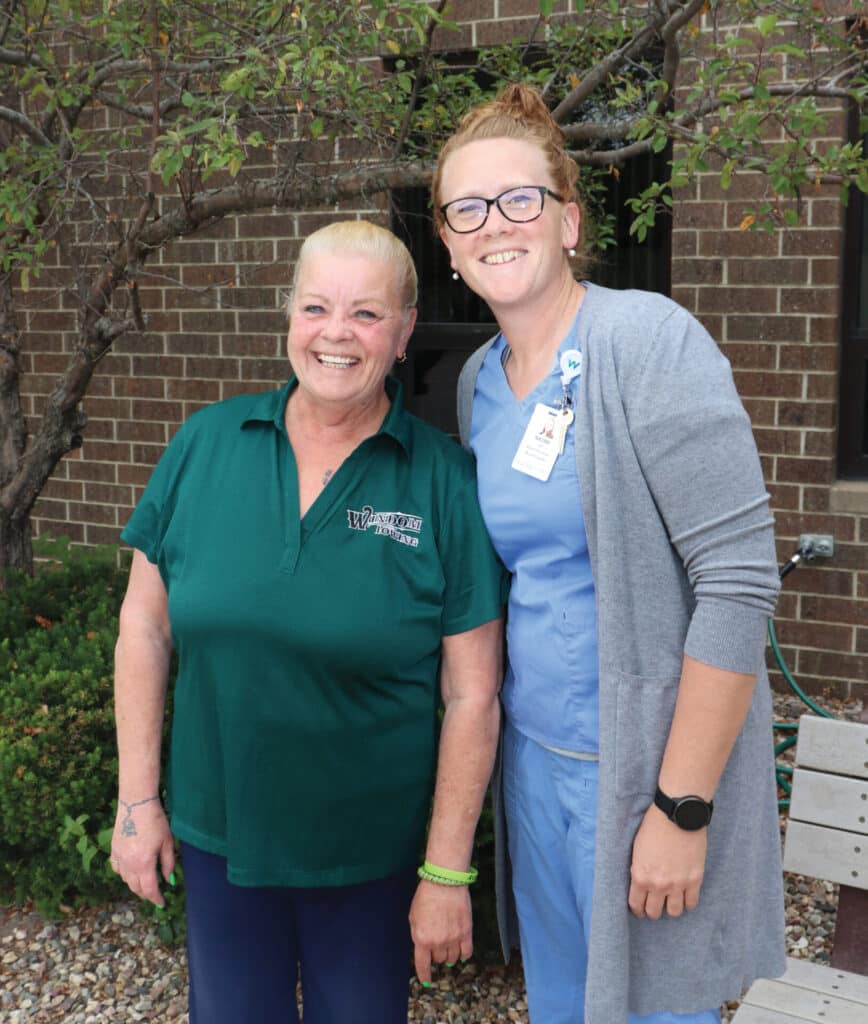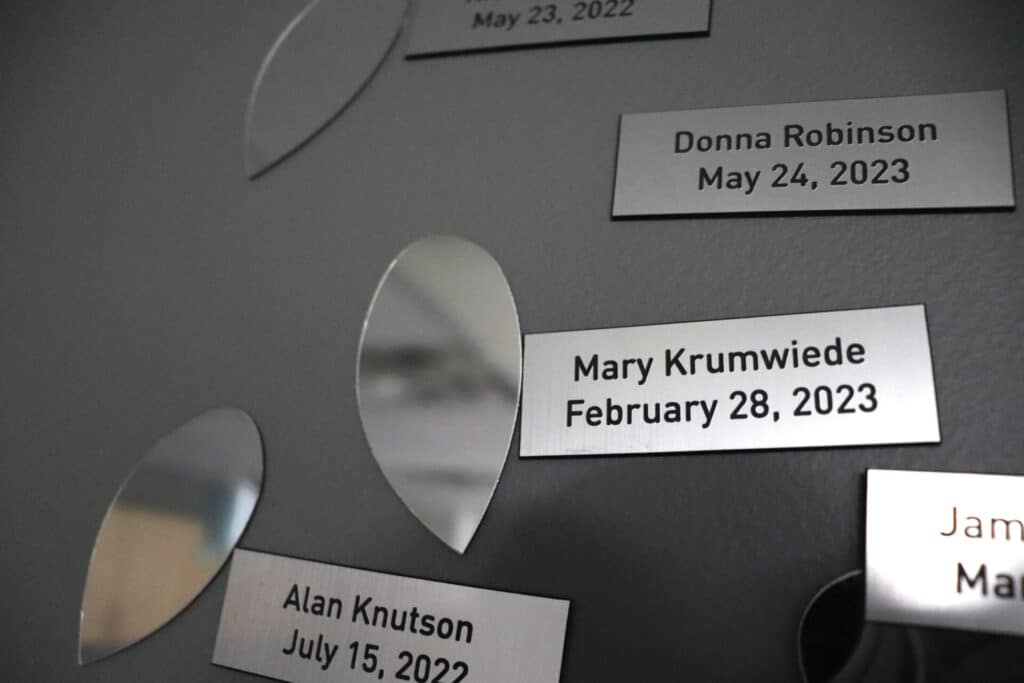
Mary Krumweide of Bingham Lake, MN had a bunion on her foot for years. She finally took the step to have it surgically removed in June 2022. What she thought would be a straightforward recovery became much more complex when her incision split open.
Routine Surgery, Unexpected Recovery
“I had the bunion for years. I just never went and took care of it,” Mary admitted. Bunions are a painful, bony bump that forms on the outside of the big toe. Left unaddressed, they can grow, causing chronic pain, toe or foot deformity, and interruption to daily activities.
Mary maintains an active lifestyle while camping frequently, being grandma to seven grandkids, and working as Office Manager at Windom Towing, where she’s worked for 13 years. Prior, she was a CNA at Windom’s Good Samaritan facility.
After her successful surgery, she went home in a walking boot, carefully following post-surgery instructions. “They took the stitches out, then it was maybe two days later. I stood on it, and my incision ripped open,” said Mary. Recovery from a common procedure was suddenly taking an unexpected turn.
Mary’s provider recommended wound care as the next step. Mary was shocked to learn that there was a Wound & Hyperbaric Healing Center at Windom Area Health.

Recalling her first visits with providers Naomi Bach, CNP, CWON, and Lori Fett, FNP-BC, Mary said, “The first time they looked at it, they didn’t gasp, but they thought it was bad.”
“Surgical incisions that fail to heal can be difficult to manage, and discouraging. No one goes into surgery expecting a bad outcome,” said Naomi Bach, provider and Wound & Hyperbaric Healing Center (WHHC) Clinical Program Director.
Another Setback
Mary began a healing journey that required dedication that would push her in ways she didn’t expect. “Healing these wounds requires a level of commitment from the patient that is hard to maintain while keeping up with their regular life and responsibilities,” said Naomi.
Already adjusting to life in a boot and wheelchair because of her wound, Mary was up for the challenges. It didn’t take long for her to face challenge number one.
At her initial consult at WHHC, she learned she had to qualify for treatment on a few fronts. First, a vascular screening to check arteries for healthy blood flow. Second, a blood draw to rule out infection in the bone. Then, an x-ray to further rule out bone infection.
“I scheduled an appointment with Vascular in Sioux Falls. Sure enough, I had only 41% blood flow down my left leg. This was the foot that was bad,” Mary recalled. On Labor Day 2022, she had a successful vascular surgery with stents placed, and her other tests showed no sign of blood infection.
“Everything was good, I could finally start wound care,” she said.
“We Don’t Like Hurt.”
Mary began coming to the WHHC once a week for a few months, seeing providers Naomi and Lori, and nurses Tosha and Tari, meanwhile seeing her Orthopedic provider in Sioux Falls.

“Every week, the place was always friendly and very clean,” Mary said. Though many faces were familiar at Windom Area Health, the WHHC staff were new for her. “I didn’t know any of them, but I just left it in their hands. I figured, they know what they’re doing.”
Wound care can often be a process of trial and error by trying a combination of treatment techniques. At first, Mary had a wound vacuum device on her foot, which reduces swelling and removes bacteria. For Mary, a month of the wound vac wasn’t showing progress.
At one of her early WHHC appointments, when she was anticipating a wound vac change, she braced for what she expected to be a painful encounter.
“They got me back in the room at the Wound Center, and I’m literally almost bawling, nearly hyperventilating,” she recalled. “I was like, ‘It’s gonna hurt!’ but the team reassured me, ‘No, we do not like hurt!’ It was a miracle because it did not hurt.”
The team, seeing that the wound vac wasn’t progressing the healing, took it off and tried different solutions.
Aligned with standard treatment techniques, the staff used topical lidocaine ointment to manage pain prior to debridement. Mary tried Medihoney, which is used to help keep the wound clean, and a blue sponge called Hydrofera Blue, which contains antimicrobial ingredients for cleaning and absorption.
To Mary, the team always listened to her and was willing to try a different approach when a particular treatment was painful. “All the staff are very friendly. Jodi at the front desk would call me once a week and remind me of my appointments. They were always there listening,” she said.
Socks and a Supportive Network
Back at home, Mary had a strong support system. Her daughter, who lives with her, came to the majority of her appointments and encouraged her to follow her treatment regimen.
“The compression socks—me and the WHHC staff joked about them a lot,” Mary recalled. Compression socks are a key part of treatment that reduce swelling and aid in getting optimal blood flow to a wound.
Mary describes herself as a flip-flop-wearing kind of girl, and compression socks weren’t exactly her preferred fashion choice. But, she knew the swelling improved when she wore them.
Three of Mary’s grandchildren, who also live with her, were constant cheerleaders. Her home was already wheelchair accessible to accommodate past medical needs of her late husband. Her daughter helped her get into her vehicle to drive to work, and her supervisors Cindy and Jed Knutson, owners of Windom Towing, were graciously accommodating for Mary’s appointments and accessibility needs. “They were God-sent angels,” Mary said.
Illess a Surprising Reset
Nearly six months after the initial incision split, Mary’s healing finally turned a corner. Once again, in a way she didn’t expect.
On January 18th, before a family vacation to Bridges Bay in Spirit Lake, Mary got Influenza A. “It knocked me out for two weeks. I could not function. I laid on the couch and was just miserable,” she said.
However, the sickness forced her to do two important things in her wound recovery: temporarily quit smoking and keep her foot elevated.
“No one wants to get Influenza by any means, but for me, it made me rest. Two weeks of not smoking did miracles in a way,” she admitted. At her next WHHC visit, her wound had significantly improved. Improvements led to no longer needing the boot or the wheelchair, and best of all, walking pain-free.
Treatment Graduation
In early 2023, Mary finally arrived at what would be, though she didn’t know it at the time, her last WHHC appointment.
“I came in and they said, ‘You are healed, we don’t need to see you anymore!’” She couldn’t believe it. “I was very excited when they said it was the last time, but also felt sad that I wouldn’t see them anymore.”

Months of patience paid off. She was ready for hot tubs, camping season, and flip flop weather.
“Mary was very honest with me about what was realistic for her. I appreciated her straightforward approach. We laughed a lot, and worked together to get through a tough situation,” said Naomi.
If you stop by the waiting room of the WHHC, you’ll see a silver plaque listing Mary’s name next to February 28th, the date of her official graduation from treatment. Her name is one of over 200 names on the branches of the “Healing Tree.”
Patients at their last appointment are able to ring a large bell in the Wound Center lobby. For some patients, ringing the bell is an emotional moment that provides closure after months, or even years, of wound treatments. When complete healing is the end goal, the long road is worth it.
